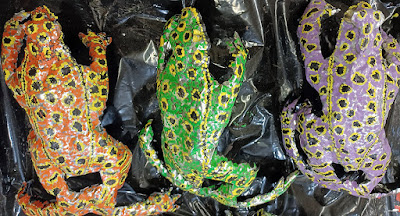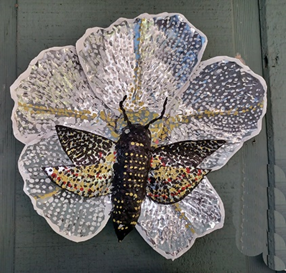As long as I live I won't forget
when I first saw it
Just a kid of 8 or 10
I was seldom indoors
No my natural habitat
was the woods and creek beds
that edged our little town
extended by intermittent visits
to the nature section
of the school library
My niche included the rabbits
blue jays monarch butterflies
giant tree fungi fossils and minnows
that I stalked each day
and read about every evening
Then I found the frog pond
It was nothing of note
just an old muddy pool
on an abandoned farm
where cows had likely
drunk in better times
I was attracted by the growing
ends
of cat tails emerging from
drying and shredded leaves
at the interface of ground and cloudy water
It was about one foot from this edge
that I saw the jelly-like mass
that would frame my entire life
There gently undulating
just beneath the pond's surface
warmed by mid-spring sunlight
was a clutch of frog eggs
I returned to the pond each
afternoon
on my walk home from school
alone so as not to expose my precious discovery
to the clods I otherwise considered friends
They would not understand
They would stomp splash
destroy laugh and leave
Alone I observed for the first time
that incredible first phase
of every life
embryonic development
I brought the old magnifying
glass
that my grandmother who was nearly blind
used to see the Sunday funny papers
Through that bulging eye I watched amazed
as the randomly assorted eggs
white on one side black on the other
rotated to position all of their black halves
upwards capturing the sun's warmth
Over the next several weeks
I watched them divide
and grow into spheres
elongate into rippling crescents
and hatch into swimming tadpoles
Each evening I read about
amphibian embryonic development
and natural history in the growing collection
of overdue library books
that accumulated in my small bedroom
This nascent understanding of
the connection of things living now
and things that will live in the future
was the point of departure
for my entire life's passion and journey
On subsequent visits to the pond
I watched the tadpoles transform into frogs
resorbing their tails to grow legs
I began to note new relationships
connecting the embryo/tadpole/frog
and its pond environment
My evening reading shifted to books
on conservation and the environment
Looking back this first glimpse
of
one of today’s most vexing problems
came from extending
my young boy's glance
of frog embryos and their environment
I began to perceive mammalian embryos
including human embryos
in their environments
I began to perceive the interrelation between
the emerging individuality
of a developing human fetus and
the individuality of a pregnant woman
I began to understand
a dramatic tension between
interdependence and autonomy
of fetus and mother
I began to recognize
the incredible responsibility that
even this glimpse of the human reproduction
had placed on me
It wasn't until I was a teenager
that I heard about contraception
It wasn't until I was in college
that I learned about abortion
It wasn't until graduate school
that I became aware of population issues
I worked most of my life
in the turbulent vortex of
women's health population and environment
And even these controversial
issues
have always felt like sub-plots
to that main mystery of
emerging fetal and maternal life
that runs through my mind
whenever the noise reduces to a level that
I can hear myself think
And when I can hear myself think
this is what emerges
People who have an abiding belief
in the sanctity of life people
who share fundamental beliefs
in the rights of women people
concerned about population growth and people
who care about our planet's future
all have a great deal in common
Yes there are dynamic tensions
at the intersections of these issues
But there is common ground
I return to that frog pond of my boyhood
often in my mind
especially when the din of conflict
rings loudest in my ears
And there with the sun's low glint
on muddy water
with iris shafts slowly bending
to gentle surface ripples
with the trill of tree frogs
or chirps of leopard frogs
or croaks of bull frogs
And it occurs to me that each of us
must have such places
deep springs where fundamental values
and universal interconnections
flow free and clear
And it seems to me that in these times
when harsh diatribe
is screamed from the furthest poles
it is essential for each of us
to find our own frog ponds
hidden somewhere in memory
And, visit there often.














































